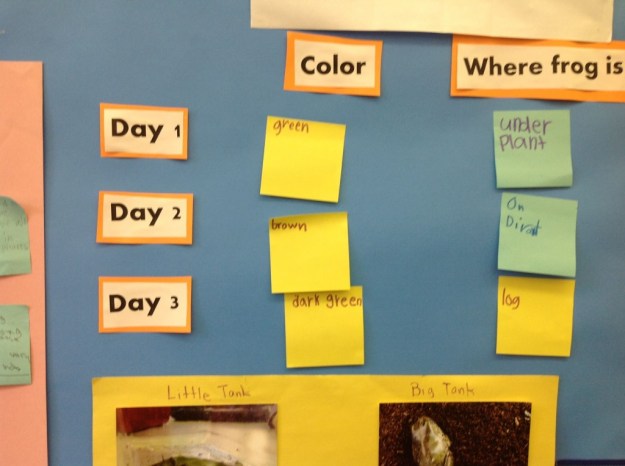Until one has loved an animal a part of one’s soul remains unawakened. – Anatole France
What happens when a group of smart, enthusiastic, dedicated first grade public school teachers get together to plan something new and exciting for their students? The Pet Study at New York City’s P.S. 42 in Chinatown is what happened!
Two years ago I worked as an early childhood consultant at P.S. 42. Rosa Casiello O’Day, the school principal, had attended the 2012 study tour to Reggio Emilia with me. She asked me if I could help her teachers move from a book-heavy thematic approach to social studies to a more inquiry project-based approach.
When I met with the first grade teachers, I was immediately impressed with their collaborative spirit and their love of their students. They told me that they wanted to do an animal study and they began naming some zoo animals that they thought might interest their children. I suggested that it might make more sense to study an animal that could be a part of their classroom. This would allow the children to observe the animal daily and to do research that would not be totally based on what they read in books or what is read to them. I waited for them to protest. None of them had animals in their classrooms. I was in for a surprise.
Not only did they go for my idea, but they brought it to a place that I didn’t even imagine. There were six first grade classes, three classes on the second floor and three classes on the third floor. The teachers decided that classes on each floor would work together. The teachers would pick an animal that they felt comfortable handling. They decided on insects, hamsters, frogs, and turtles. Each room would have a different animal. The children would pick which animal, on their floor, they would like to learn more about. They picked three choices and were told that they would probably get their first or second choice. Luckily it worked out smoothly and each child got a first or second choice of animal to study.
After the groups were established, the teachers arranged to have common “Inquiry study times” and the children moved to the room with the animal they were studying. I was afraid that this might end in chaos but I was totally wrong. The children very enthusiastically walked to their pet study room.
Something quite wonderful came of this collaboration. Because of a district mandate (not what the principal really wanted), there were three categories of first grade classes – bilingual (basically, children who just arrived from China and who spoke little English), ESL (children who could speak some English but not fluently) and monolingual (English-speaking children). When these three groups were merged during the inquiry period, children who never communicated with each other became friends. Children learning the language began speaking much more English. Children who had difficulty understanding or expressing themselves in a new language, had peer translators! The teachers were quite excited by this unexpected perk of having the children intermingle and work together.
Here are some examples of the work that the children did. Notice how the act of observing on a daily basis provoked children to have many “wonderings.” They researched for answers in many different ways: observations, books and the Internet and sometimes by asking an expert, such as when they visited a pet store. Without actually following a “common core curriculum” or “bundle”, the study had so many of the CCLS embedded into the children’s work.
The Hamster Study
The Turtle Study
The Frog Study
The Insect Study
































